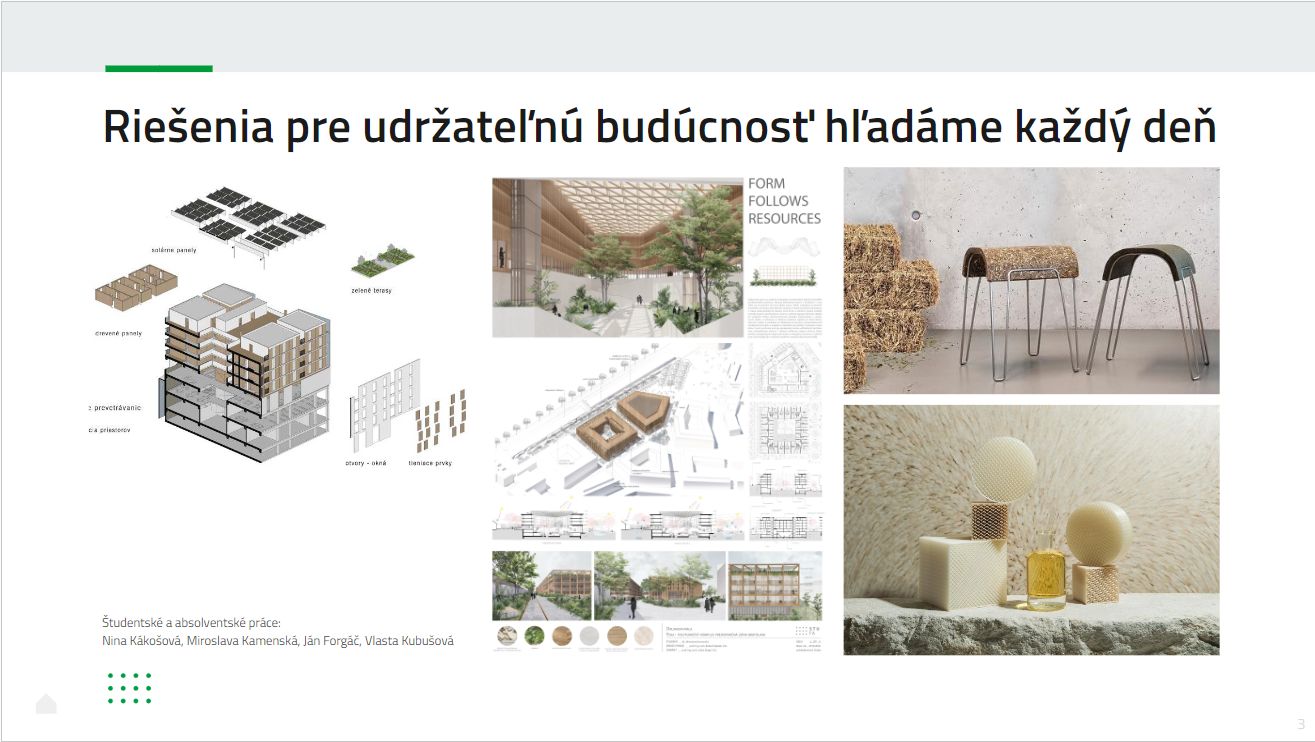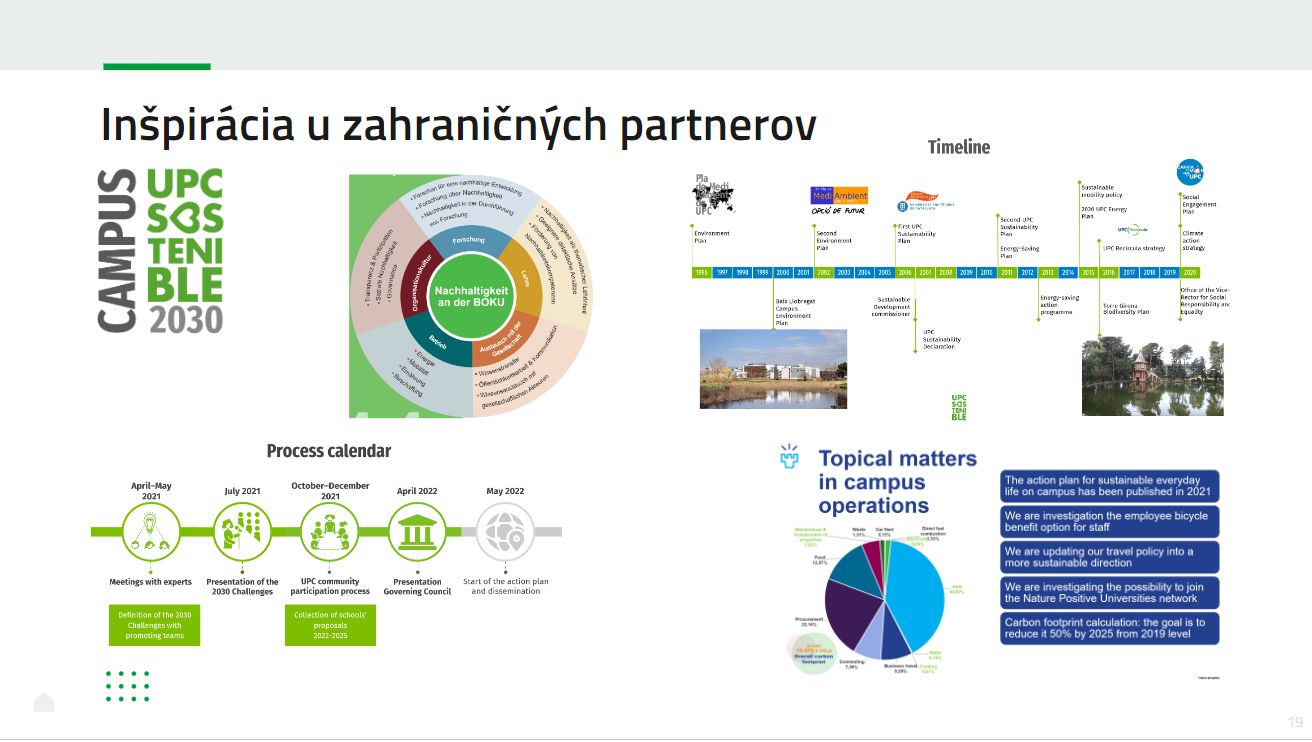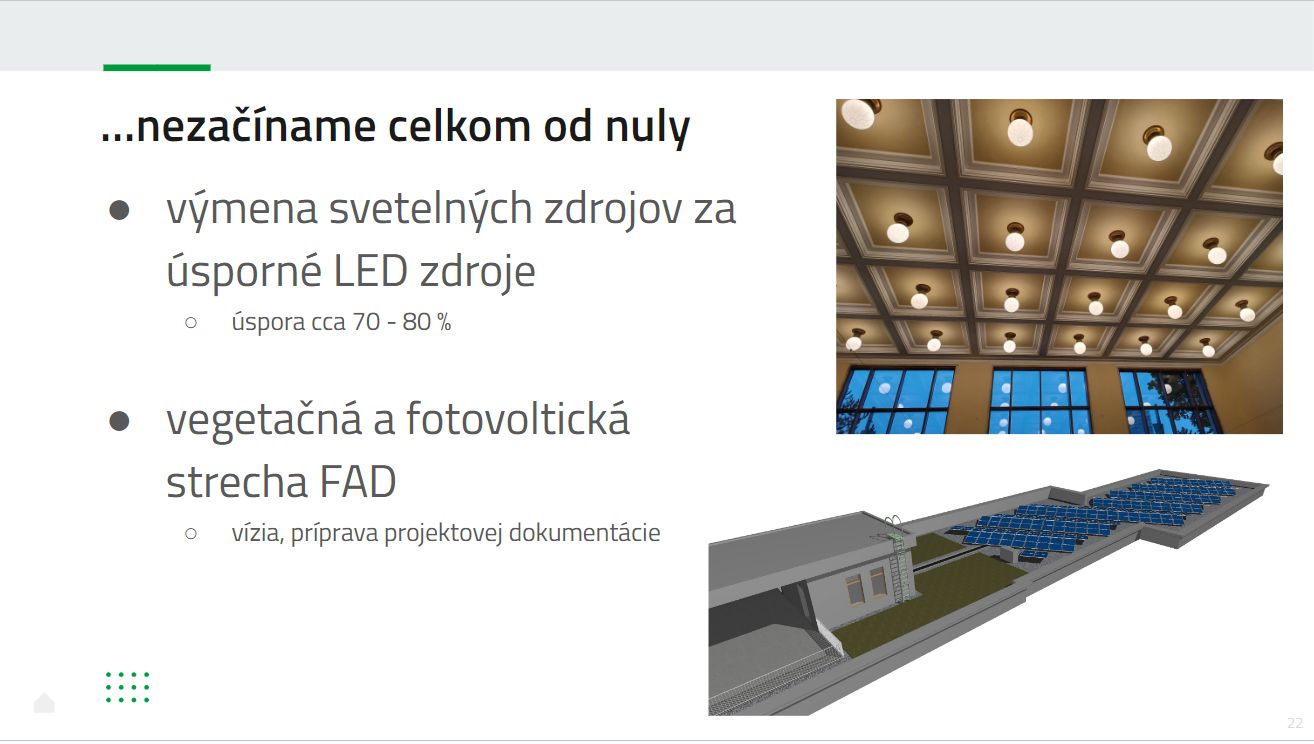The following text presents some of Peter Morgenstein's remarks after a public presentation given at the Future Scenarios and Design event:
Slovak University of Technology has decided to prepare itself to reduce its carbon footprint and to look for ways and means by which it could influence the public and promote sustainable living as part of its activities and social responsibility. As part of the agenda covered by the prorector prof. Maximilian Strémy, a group for a sustainable and carbon-free university has been set up, led by Peter Morgenstein from the Faculty of Architecture and Design. Currently, activities are being prepared and strategic goals in the individual areas are being formulated, which will then be refined with external experts and then implemented gradually.
 What is the reality of everyday processes?
What is the reality of everyday processes?
Small awareness and interest in sustainability and emissions reduction in practice
"the school is not mine" (energy, spaces...)
although we are slowly progressing we are still not paperless
lack of funding for implementation of systemic sustainability principles
Motivation: to create a fundamental momentum for STU's sustainability journey
Tasks: co-shaping strategy, goals, milestones, tools
launching implementation and monitoring progress
laying the operational foundations for this journey with the support of the STU leadership
anchoring STU's position in the international professional and domestic societal context
The Working Group for an Emission-Free University was established, composed of experts from across faculties + external experts and practitioners.
Vision
STU - a low-carbon, innovative, green, energy efficient, sustainable, decent and socially responsible institution, using resources efficiently and subscribing to the SDGs (Sustainable Development Goals according to the UN)
Strategy
Define a new prism of carbon footprint reduction and apply it to all the main and supporting areas of the University's activities (science and research, education, administration, infrastructure, operations, outreach...)
+ defining a new "we" at STU (identification and motivation)
Objectives
Identify key areas that have the potential to contribute to neutralizing STU's carbon footprint
Objectives by area:
Protect natural resources
Encourage green thinking and behaviour
We renovate and build in harmony with nature
We buy in accordance with ecological criteria
We research and teach in terms of sustainable development
Process
Define a mission, formulate and adopt a strategy
Raise awareness and engage staff and students through tools
Monitor status, define and track milestones (quick wins & long term goals)
Examples of activities in the Research area (science and research)
mapping past, current and upcoming projects to the SDGs
overview of projects contributing to the SDGs - important for strategic orientation and partnerships
Examples of activities under the Teaching area
Mapping of programmes/courses/courses on sustainability
Interdisciplinary list of courses - possibility of targeted selection of courses based on sustainability issues, linking with international partners
Examples of activities within the Outreach area (societal outreach)
Creation of tools to support student and staff activities towards the public
positive image among applicants and students
inter-university partnerships, memoranda
events and grants for bottom-up (middle-out) activities
Examples of activities within the Own footprint area
Identifying quick wins targets in the areas of operations, administration, processes, development...
carbon footprint analysis
workshops with responsible STU departments
 STU is part of a number of international networks and projects that also contribute to the following objectives
STU is part of a number of international networks and projects that also contribute to the following objectives
creating a sustainable green campus and sharing common resources and information within the consortium
EULiST - European Universities Linking Society and Technology aims to make Europe tangible for all member universities and students
Society and technology are interlinked. Society creates the need for technological change and technological progress influences the development of society. EULiST recognises the need to train individuals who understand the technical problems of the future and the societal framework and dimensions for which technological solutions are designed. EULiST promotes the integration and cross-pollination of science, technology, mathematics and social sciences.
accord
CO2 reduction programme - modernisation and renovation of existing spatial infrastructure (6 buildings in total) for higher education, research and innovation
 The journey towards a zero-emission university is a process and we believe that the upcoming activities will lead to the desired results!
The journey towards a zero-emission university is a process and we believe that the upcoming activities will lead to the desired results!
Published April 20th, 2023
Author:
Peter Morgenstein
Feel like discussing the topic?
Send Peter Morgenstein an email.